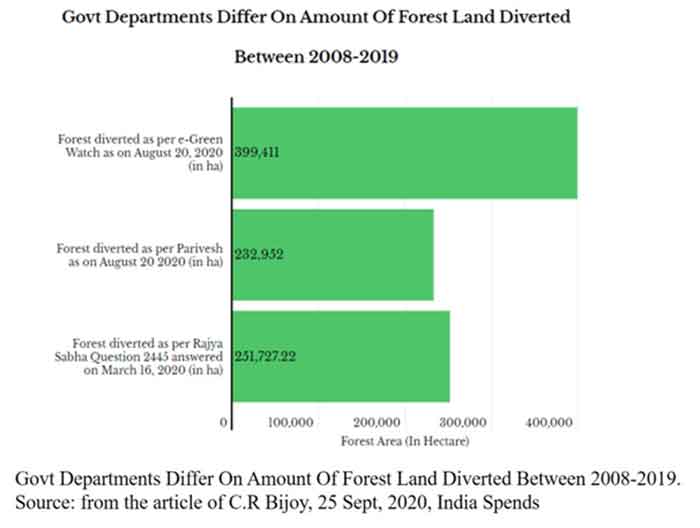
We are almost there. 75 years of attainment of India’s Independence. 80 years of Quit India movement against British Colonialism. The largest democracy where the Constitution declares our country to be a Sovereign Socialist Secular Democratic Republic. Perhaps it is improper to express some confusions which of course are outcomes of ignorance regarding Constitution, Law, Rights and related subjects, which, many will agree, are difficult to grasp. But some recent happenings, as unfolded, have been increasing these confusions.
Take for example a recent happening in West Bengal. In the month of June-July, fruit-wise still a month of Mangoes, allegedly some fellows at the behest of Adani Power company and emboldened by administration of WB started destructing mango and lichi orchards in some villages near Farakka (the place famous for barrage) for the purpose of clearing way for constructing transmission towers for carrying electricity from Adani’s power plant in Jharkhand to neighbouring Bangladesh. When villagers protested many were beaten by police and many were arrested. A team of Sanyukt Kisan Morcha that went to inspect the area was virtually detained by the administration and was prevented from going to the spot, a press statement of SKM said.
One farmer Lutfar Rahaman took the matter to the High Court of Calcutta and order was delivered on Aug 5. A reading of the order may reveal that Adani Power did what they did and the District Administration did what they did in spite of the fact that the farmers did NOT get any prior notice, did not get any invitation to any meeting, no compensation etc was discussed or determined or given. (A report of the incident is linked here.)
However, for these seemingly illegal acts the illegal intruders and destructors of orchards and all those who worked on their behalf, those who had beaten and detained citizens, were NOT penalised; the order asked for conducting discussion and settlement of compensations within two months.
Thanks to the effort of Lutfar Rahaman and the legal team that worked for his case! We do not not know what might have happened had he not taken this matter to the High Court.
We must also thank the High Court, without their intervention god knows what might have happened!
But while trying to understand the question of a farmer’s right vis-à-vis a power company’s right, more and more confusions developed. For example, a question may arise: whether Adani Power and the administration has the ‘right’ to curtail ownership of the farmers right over their own land OR how Adani Power got that right, and which ‘law’ or ‘act’ enabled Adani Power’s right to be more fundamental or powerful than that of the concerned farmers. While searching the internet an information could be found, a page of a website ‘Electricity Sells’, tells us that the Power companies have that right (and mentioned Section 51 of the Indian Electricity Act, 1910 which is similar to the provisions of Section 164 of the Electricity Act 2003) and another page explains the ‘nature’ of use (use but not acquisition, which perhaps implies less compensation than may happen in case of acquisition) which is overriding (may be said to be more powerful than the farmers right – a farmer cannot say: Well, sir, you have the ’right to way’, but please do not disturb me and my plots, find some other way, just like you have right to drive your car, but you cannot drive through my flower garden)! Another question may appear, what happened before promulgation of that 2003 act?
Therefore, a Power company’s ‘right to way’ is indisputable, even when that is a private company, not a public utility company! And perhaps no questions ever cropped up like ‘why go this particular way and no other way instead’ because there are ways a power company outside the state of West Bengal can take their power to Bangladesh without curtailing rights of farmers, for example, selling power to a power grid that is connected with Bangladesh power grid (easier), or (difficult to think) taking/utilising the railways’ land. (By the way, an alternate route was, for example, suggested and mentioned in an aforesaid report which would have needed much less orchard land of the farmers.)
Besides, no farmers or persons there requested the private owned company Adani Power to produce power in Jharkhand and sell that power to Bangladesh; they will not be profited or benefitted at all from this business. Producing and selling power to Bangladesh was decided by Adani company for its own profit. Why should others suffer! Suppose, one farmer there one day establishes a power company there and want to sell that power to Jharkhand to some villages or factories – in that case will his power company be allowed to put transmissions line and towers through that Adani power company’s property in Jharkhand if that property lies in between?
Compensation is also tricky: as all the land needed for ‘right to way’ of their electricity transmission is not taken away from the farmers concerned, only perhaps the transmission tower base part; but land under the transmission line officially will still be owned by the farmer but his choice as to what he can do in his land will get restricted: he may not be permitted to cultivate all types of plantations/vegetations, he may not be permitted to construct.
So, there are rights and rights.
This author does not know whether our constitution makers discussed such issues of rights – not just the Indian Electricity Act, 1910 and Indian Telegraph Act of 1885 of British Era which is acting as if as an edifice of the later, but also one that gave rise to many disputes, the act of land acquisition or Forest Act of the British Era; whether they could continue in postcolonial independent country. News of recent movements of some organisations with demands of retaining the Forest Right Act 2006 and its implementation by the government are also behind this author’s penning this article. The following is a graphic taken from an article in India Spend to show the extent of forest land diversion after promulgation of Forest Right Act 2006.

Here the minimum figure shows land equivalent to about 2330 sq. km. or more than the are of National Capital Region and the maximum figure is more than twice the area of Kolkata metropolitan area. A govt order of 2013 made provision for diversion of forest land without consulting communities in case of some mentioned reasons!
But more confusing is the retention of the whole British Era criminal procedure codes and etc, including that ‘sedition’ related act(s) by the makers of Constitution of India and sanctioning (or sanctifying) those by the Constitution. I do not yet know what was Babasaheb Ambedkar’ view and role, for instance, in this regard. It is heartening to see that the Supreme Court recently took up the matter in case of ‘sedition’ act of the British Raj and requested appropriate authorities to reconsider.
Sandeep Banerjee is an activist who writes on political and socioeconomic issues and also on environmental issues. Some of his articles are published in Frontier Weekly. He lives in West Bengal, India. Presently he is a research worker. He can be reached at [email protected]













































